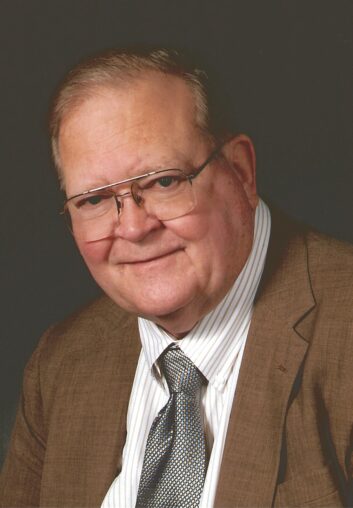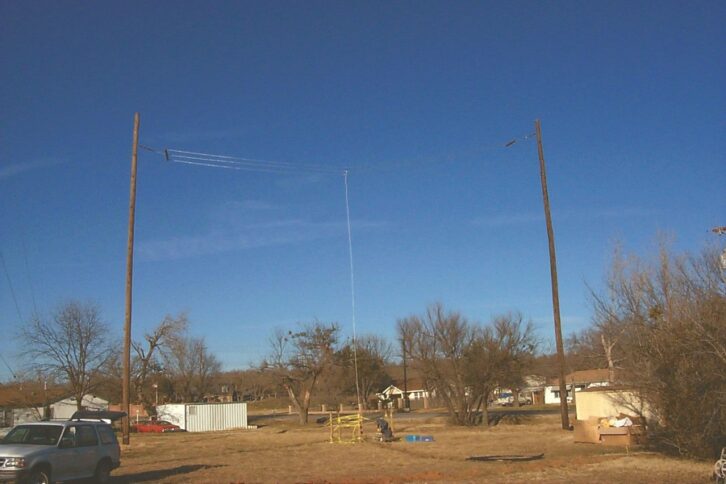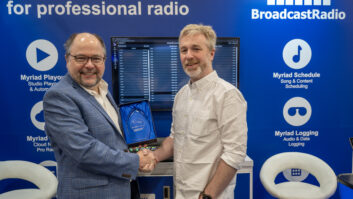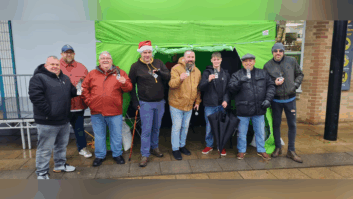
Speaking on a cell phone while traversing wide-open stretches of roads in west Texas on his way to see a client to help with a studio rebuild, Jack Sellmeyer is quick with a story and not shy about sharing his opinions about why AM IBOC is doomed and how broadcasters in large communities have lost touch with their listeners.
It’s easy to see why many of Sellmeyer’s colleagues consider him one of the greatest raconteurs of broadcast technical history. His 50-year career clearly has given him a privileged view of broadcast evolution.
You also can understand why Sellmeyer is the recipient of this year’s NAB Radio Engineering Achievement Award. The honor is bestowed upon industry leaders for significant contribution to radio engineering.
Sellmeyer, 68, has a diverse résumé rich with broadcast technical experience, from manufacturing and design contributions with the Gates Radio division of Harris Intertype and later working for Collins Radio, to more recently his years in private practice as principal engineer with Sellmeyer Engineering.
“This has been a very rewarding experience. It’s a great thing to be able to do the work you love,” he said.
Sellmeyer said he was fortunate to have some of the kings of broadcast engineering as mentors through the years, including Bob Silliman, Jules Cohen, Louis King, Don Everist and Bob duTreil Sr.
That was pretty heady stuff for a young man from Carlsbad, N.M., who worked his first radio gig as a board op for his hometown radio station while still in high school and then held several chief engineer positions while putting himself through college at New Mexico State University and Arizona State University. He even had the chance to build several broadcast facilities while still in school.
“I supported myself through college and was fortunate to work for some very good operators. I actually had a pretty good standard of living while in school.”
Sellmeyer joined Collins Radio Company in 1966 after graduating from Arizona State with a Bachelor of Science degree in electrical engineering. He worked first in product support and then field service positions. Sellmeyer traveled to radio stations that used Collins equipment to assist in troubleshooting unusual problems and restoring operations.
“I was really more interested in the manufacturing and design side of the business.”
Gates/Harris
After a short stint with Granger Associates in its Bauer Broadcast Division, where he developed design specifications for a new solid-state FM stereo exciter, Sellmeyer moved to the Gates Radio Division of Harris Intertype in 1969. There he worked in the FM engineering department.
“I enjoyed product design very much — the whole design planning process where you set the objective for a project and then actually see it in production and have success in the field.”
Sellmeyer developed new modulator and automatic frequency control modules for the TE-1 solid-state FM exciter to correct frequency stability problems.
“It became the TE-3 exciter used in the entire Gates/Harris FM-XXH3 model transmitters,” Sellmeyer said.
Other projects for Gates/Harris included advanced development of high-power amplifiers and design work on the FMX-70 exciter.
Nationwide Communications was successful in hiring Sellmeyer to be chief engineer of its Cleveland combo in 1970. He managed a department of 12 technical personnel and executed construction of an addition to the WGAR(AM) transmitter building to accommodate new studio and office facilities for operations and management at the station.
By 1973, Sellmeyer’s product design skills had drawn the attention of a former employer. He was recruited to rejoin Collins Radio, which had been acquired that year by Rockwell International. He was named senior engineer in FM exciters and on 5 kW and 1 kW pulse-width modulated transmitters.
Sellmeyer worked with Forest Cummings at Collins to design low-level solid-state circuit boards used in the Collins 828E-1 pulse-width modulated 5 kW AM transmitter. Sellmeyer was listed as co-inventor on three patents Collins attained for the technology.
“I worked on cost reduction programs for the 1 kW AM transmitter and the 2.5 kW FM transmitter. I also increased the power rating of the existing 2 kW FM transmitters to 2.5 kW.”
During Sellmeyer’s seven years with Collins, he developed a series of three automatic control systems for use with the Collins line of parallel AM and FM transmitter systems, involving the application of TTL logic to provide automatic switching of FM exciters and RF power amplifiers.
“I was also one of the engineers involved in the design of the Collins 828E-1 pulse-width modulated 5 kW AM transmitter.” He also developed a series of audio consoles, the 212P and 212R series, for the radio market in the mid-1970s.
Collins Radio
“I provided engineering support to assist the law firm defending us. My work included forensic analysis of purported problems with a particular line of Collins equipment. We were able to successfully defend the company in the suits,” Sellmeyer said.
Collins Radio, which produced a number of high-performance solid-state commercial transmitters and provided communications for America’s space program, began to struggle financially by the late 1970s. Rockwell International eventually sold the division to Continental Electronics in 1980.
“Things had deteriorated at Collins Radio. Rockwell International didn’t have the same type of vision for its radio division and they were increasingly focused on yearly budgets and revenue plans. They became focused on how much business they could grab month-to-month. There was no long-term planning.”


After the sale of Collins Radio, he used the opportunity to form Sellmeyer Engineering, a broadcast engineering consulting firm. For nearly 30 years in private practice, Sellmeyer has focused on AM allocations, FCC applications, transmitter plant design and construction supervision, and AM directional antenna design and measurements.
“I’ve never thought of myself as doing anything better than another guy. I’m efficient at many things. I’ve tried to serve the broadcast engineering profession well.”
Sellmeyer has been a frequent contributor to NAB-sponsored workshops and seminars related to AM directional antennas and remains active in numerous professional organizations.
“Education is the key to success for any broadcast engineer. I’ve learned so much from working with Ben Dawson and Ron Rackley, Tom Silliman and Tom King. I knew Bob Orban when he was in grad school at Stanford. I knew he was a very bright guy so I learned what I could from him. I learned from all of them. My advice to any young engineer is to become involved in your profession.”

AM IBOC concerns
Sellmeyer, who recently cut back to a half-time workload, seems to have an educated opinion on numerous broadcast topics. He said he has little confidence in the success of AM IBOC and thinks the interference issues are likely too large to overcome.
“I think the hurdle is too high and impossible over the long haul if you maintain existing services. I do not think it is a viable system. We made a huge mistake by duplicating the clear channels at night,” Sellmeyer said. “The interference is compounded when you have daytime licensees and others that do not comply with power reductions at night.”
That thought led Sellmeyer to make another observation. “Operators used to be in touch with their community and their listeners. They still are in small markets. That was once true of large and medium markets, but they got off track over the past two decades.”
Colleagues within the broadcast engineering community said Sellmeyer is deserving of the NAB award.
“Jack is quite soft-spoken, but don’t let that fool you. He’s a man with great professionalism and confidence — a confidence built on decades of experience in the business,” said Tom King, president of Kintronic Labs Inc., whose father Louis also has won the award.
King said Sellmeyer was knowledgeable in FCC allocation, RF antenna system design and mechanical installation details. “Kintronic Labs has benefited greatly from our longstanding relationship with Jack.”
Ben Dawson, managing partner of Hatfield & Dawson Consulting Engineers, said, “Jack’s work implementing AM stereo was one of the pioneering efforts in getting the industry to recognize the importance of bandwidth for optimum AM performance.”
Dawson said Sellmeyer “did implementation and tune-up work for several complex antenna systems for our firm, which turned out very well.”
Sellmeyer and his wife, Jeannine, have been married for 40 years. The couple has two adult sons and lives near McKinney, Texas.
This year’s recipient of the NAB award on the television side is Sterling Davis, vice president of engineering for Cox Broadcasting, who is also active and respected within the radio broadcast engineering community.







